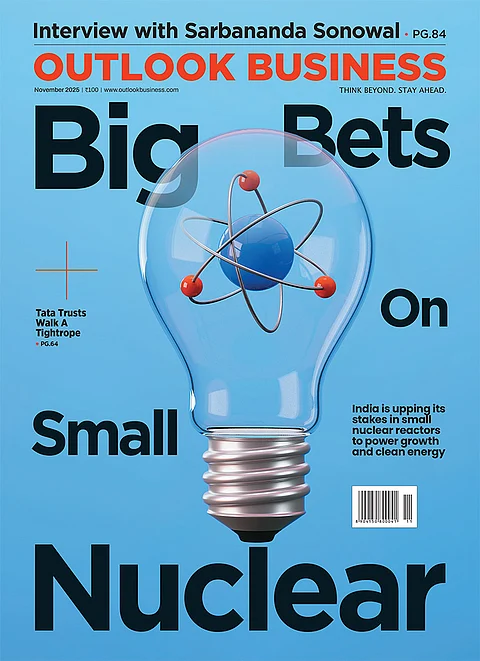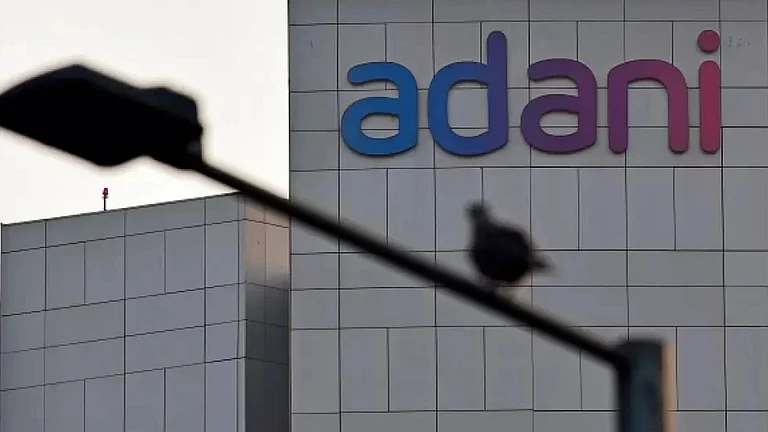Over the past few years, India has established its presence as a ‘digital economy’. Smart phone use is booming and data prices have dropped to an all time low. In the backdrop of these developments, McKinsey Global Institute, in its study titled ‘Digital India: Technology To Transform A Connected Nation’, finds out what this increased connectivity means in economic terms and which are the sectors that could benefit from digital transformation. Outlook Business caught up with Anu Madgavkar and Alok Kshirsagar from McKinsey to understand more about the findings of this report. Edited excerpts:
Could you give us an overview of the insights this report offers?
Madgavkar: For MGI, innovation and technology is one of our core global research pillars. In the context of advanced economies and developing economies, we have done many research pieces on technology and digital in particular. But this report is a little special as it represents insights that we gathered at a very granular level from India. It also has a lot of real life examples.
Kshirsagar: The report has a perspective on how it works and how do we scale it up. We have moved beyond just the showcase aspect of digital. Secondly, there is very high variation between intent to have digital strategy and the actual results from it. Even in a FMCG or retail context, if you look at digital channel as a form of advertising and basic fulfillment, you will make a basic investment in customer experience, payment ease and order fulfillment. But if you see it as the equivalent of 500 stores, then the mindset with which you will invest will be fundamentally different. The ability to drive on digital infrastructure that our country has is what we are talking about.

What are some of the findings that surprised you?
Madgavkar: The first part of the report establishes the tremendous surge of digital usage in India. At one level it looks well-known, but if you see the comparative numbers across India and about 16 other countries, we are the second fastest growing in digital infrastructure and usage. We have crossed the tipping point of affordability and cost in a very dramatic way. Cost of data plans has fallen from almost 10% of monthly per capita GDP 3-4 years ago to less than half a percent. And the current numbers are at 0.1%. Indian data user is using more data per capita than the Chinese today. That is poised to sustain and increase. The fact and extent of this massive digital outreach in low income states and semi urban parts, which are spearheading this growth, is surprising.
The second is when you thought of digital economy, you usually thought of IT services, telecom, and electronic manufacturing. That is 8-10% of GDP in value terms. But there is an equivalent amount or more opportunity as digital technologies touch all of these sectors which you don’t think about as digital sectors. Like agriculture, retail, healthcare, logistics. The productivity gains from digital entering these sectors, that have till now been peripherally been touched by digital, with this consumer base, is truly dramatic. We have estimates that range from $10 bn-$150 bn of value from each of these sectors.
Kshirsagar: The real leapfrogs have happened in UP, Bihar. What does that mean? It means that mobile internet is available at a massive scale, never seen before. Therefore the ability to provide information to farmers on precision in agriculture, weather patterns, pricing in mandis, or telemedicine, these are things that even five years ago, you had to go to a centre of some sort and deal with uncertain connection to get any of that. We are excited because we have now built the roads. We have got broadband, 450 million internet subscribers and jump in usage of data because of drop in costs. Now you can have all sorts of vehicles race down there.
Will data prices continue to remain at this level?
Kshirsagar: We can’t predict what will happen with the pricing. But if you look at the evolution of the markets over time, as you have more and more services that go on to that data, there are different monetisation schemes that will occur. We suspect there will be more business models that monetize, in the customers’ interest, the actual usage pattern. This will be done with proper privacy requirement.
How are Indian telcos sustaining this price?
Kshirsagar: We have seen here an extreme version of what we see in every category. We have seen it in retail, financial services and so on. In India, to get to what you have to in terms of scale, you have to do it at a price point that is there at this level. There is no other way to tap into latent demand in India. The real question is to what extent is this creating a benefit.
Say I am a cash-and-carry customer and I need quality off take for fruits and vegetables. It would be easier for me to go through a platform than go to a mandi. As we see aggregation of demand on these very specialised ecosystems, there will be enough value for all participants – due to improved pricing, better productivity, better targeting and higher lead conversion – that you can pay the company providing the infrastructure.
How can digital transform the way businesses operate?
Madgavkar: Let’s take logistics, as it seems to be an unlikely sector for digital to transform. We see at least two to three digitally enabled transformations. The first is platformisation. Like we have seen platform merge on the passenger transport side, there is no reason why either through the government playing a stimulating role and starting to create a platform or in the absence of that, private sector entities actually creating a platform in which shippers and those offering freight services can discover each other in terms of reputation, compare price and do fulfillment on a platform basis. It is a very powerful idea given the inefficiencies in shipping costs that we often as an economy bear. Uber freight is one example of private entity that is already doing this. But there could be many more.
Second, as mentioned in the report, is telematics which is putting all sorts of intelligent sensors and equipment into transportation units. Take a truck for example. And then picking up the data in digital format and then at the backend doing the analytics to improve the efficiency of that transportation unit. We have seen examples of 30%-40% of fuel consumption being saved. Or driver downtime being cut dramatically and turnaround time of a truck really shrinking.
 How is the digital adoption different in each sector?
How is the digital adoption different in each sector?
Kshirsagar: Our report finds that it is not about the sectors but about the companies. There is almost a 50% difference between those who are getting the value of these digital investments and those who are just talking about it in investor conferences and doing nothing else. So there is opportunity in every sector. You see large successful companies being more nimble than a small-scale company. But the gap is enormous. Like in providing working capital to SME’s – the best performer can give you straight through instant loan. The median is eight days. Bottom quarter is 24 days. That is the variation even in a mature sector like banking.
Are companies still apprehensive about adopting digital technologies?
Kshirsagar: I don’t think people are asking whether or not one should do digital. The question is how I get value out of it. The history has been very mixed. For example a lot of people have done too many ‘shiny toys’. Now companies are being much more concerted in saying how am I going to create something of scale and give more value to customer. They work backwards to see where does digital come in, offline come in, where are we digitally enabling our offline channels and so on.
Madgavkar: Our survey also shows that strategy in an organisation matters a lot. Digital leaders are ones who have not just CEO or CEO-level people driving the digital agenda. But also have strong centralised units which are driving digital transformation.
What is the impact that digital has on companies?
Kshirsagar: The core idea of how we create value for people using digital infrastructure is deeply felt. We are excited at how digital technology can transform various sectors and create enormous customer value. And we already see companies using digital technology having 50% better results than those who did not.











